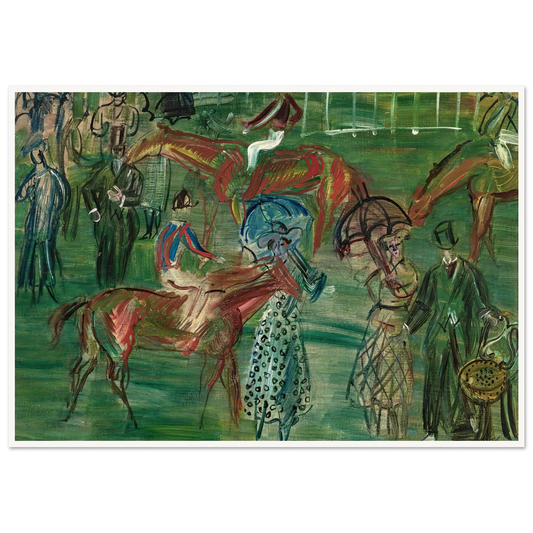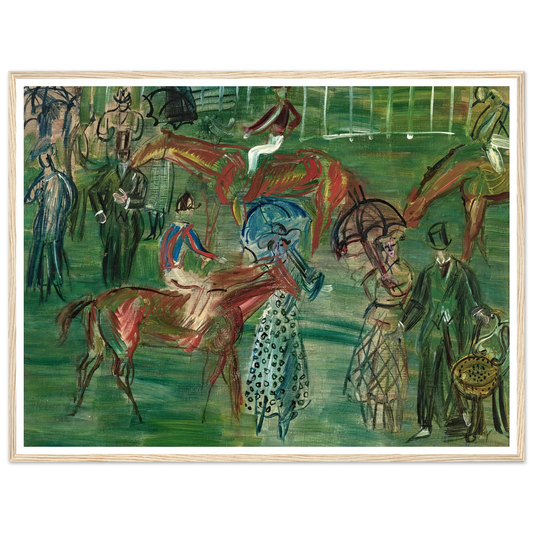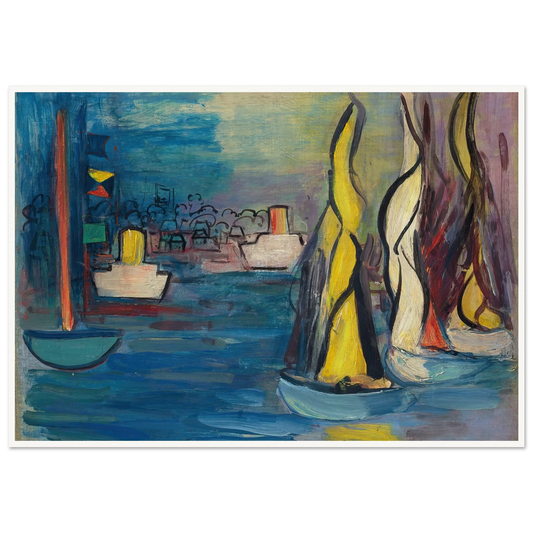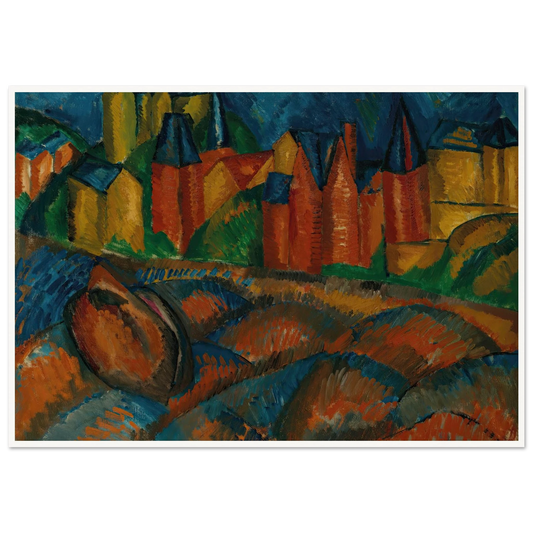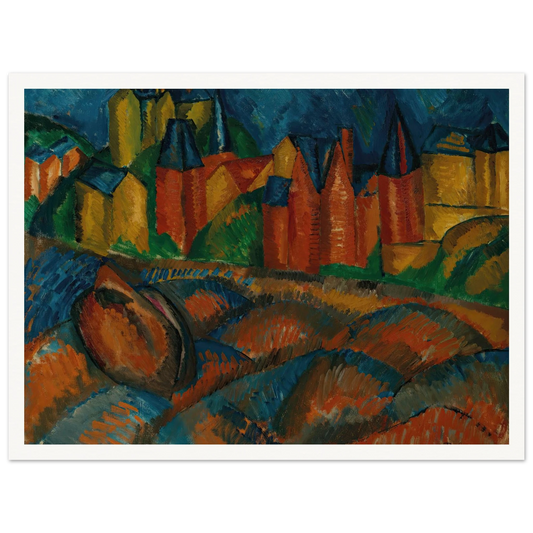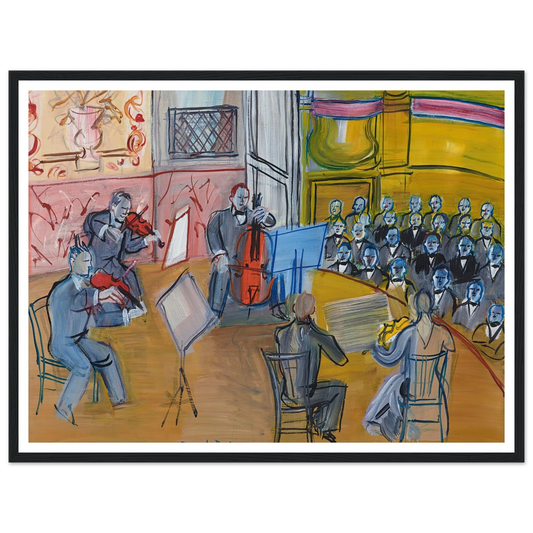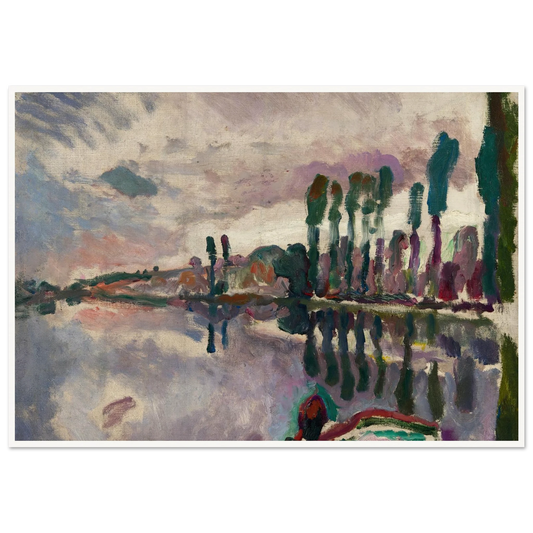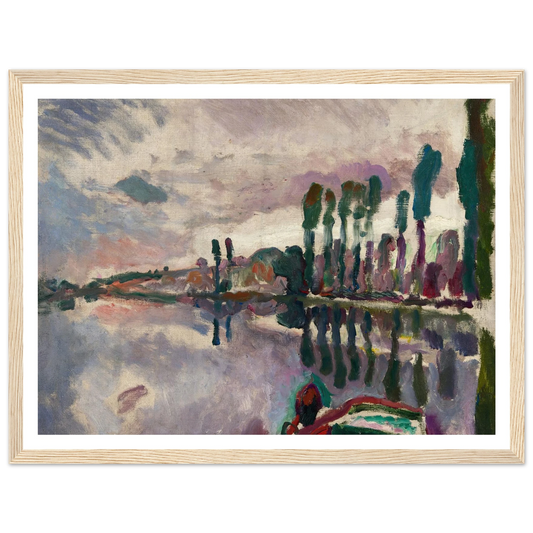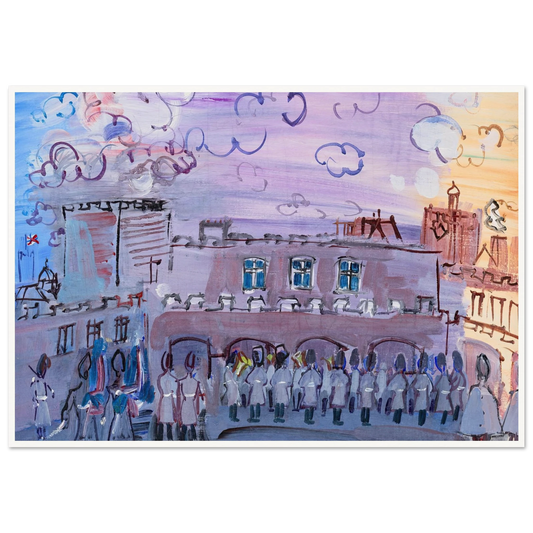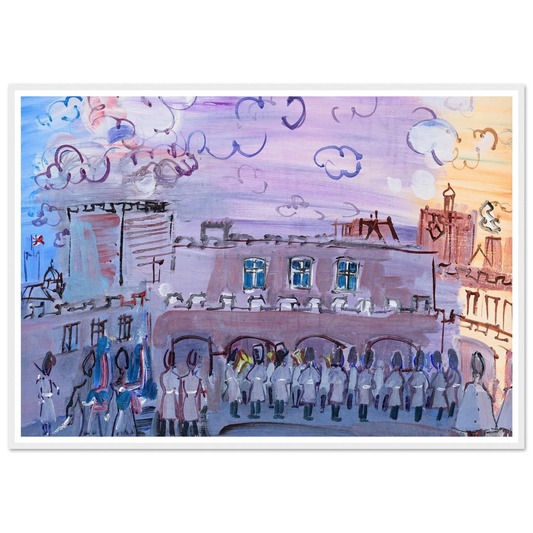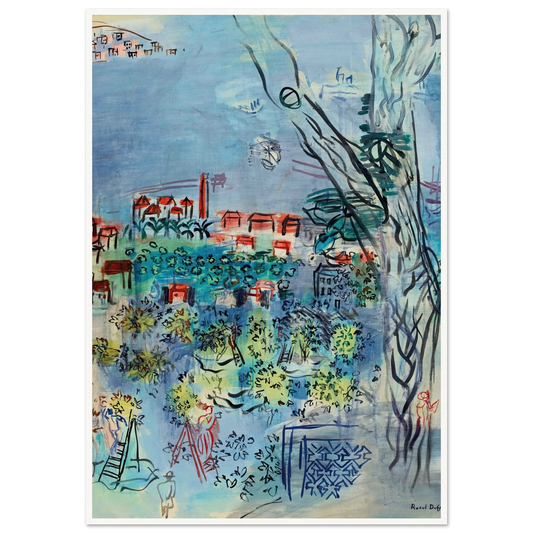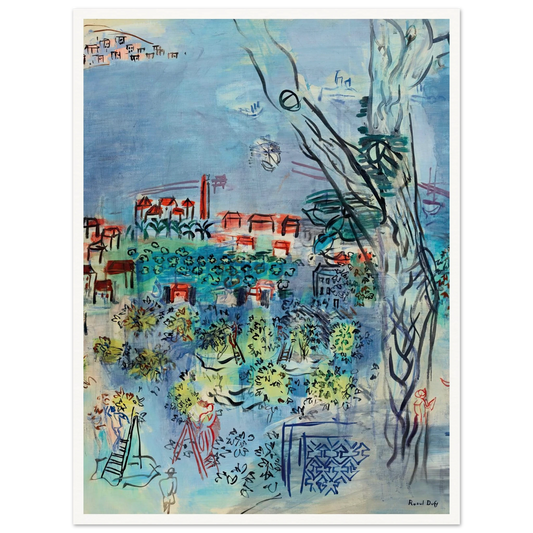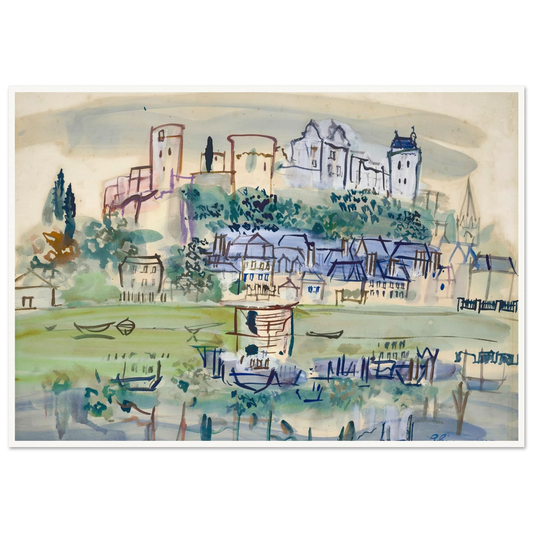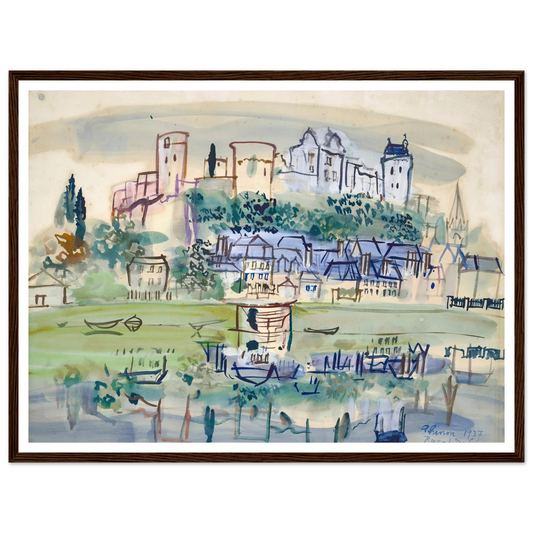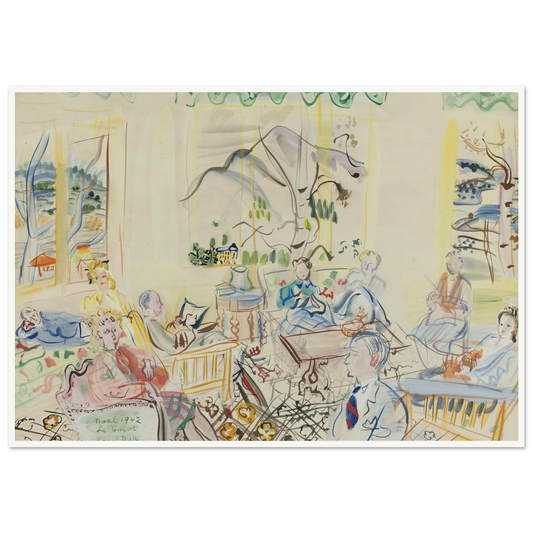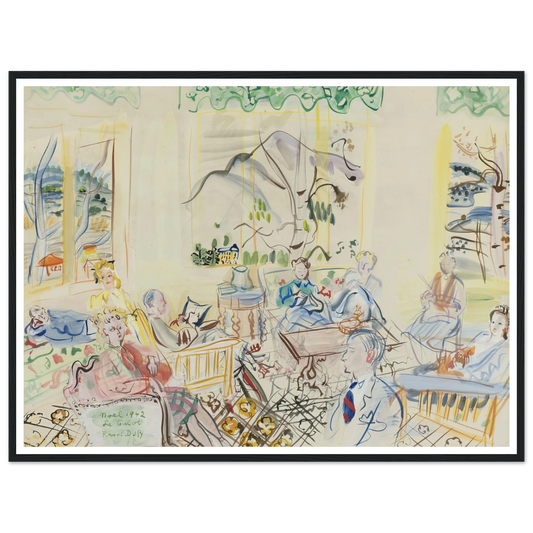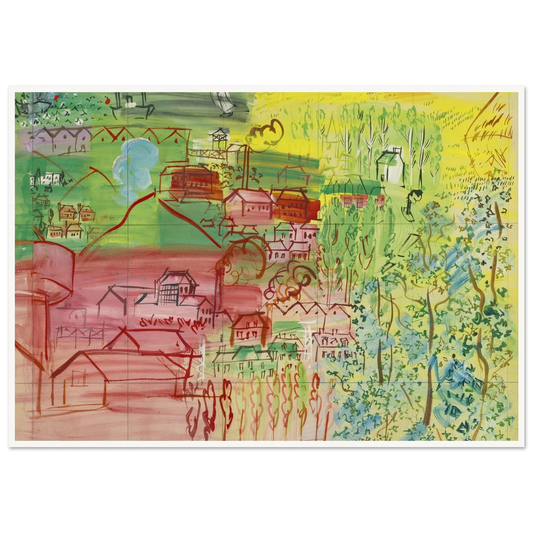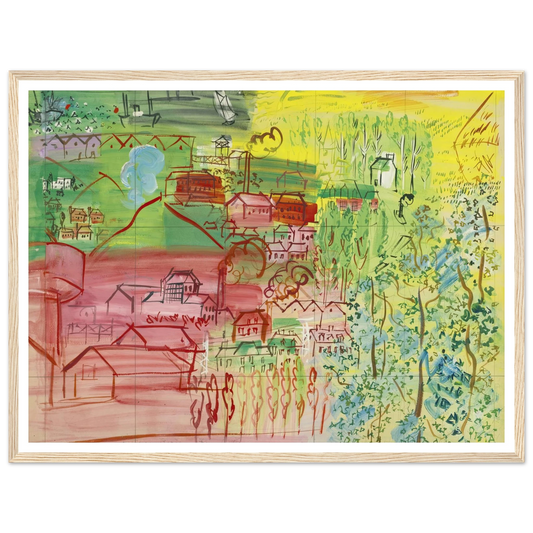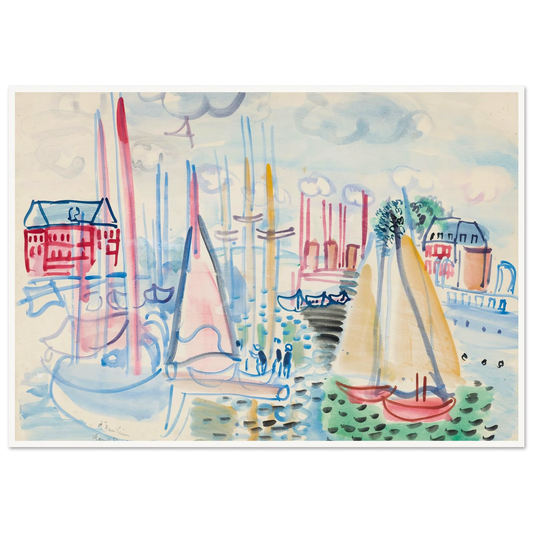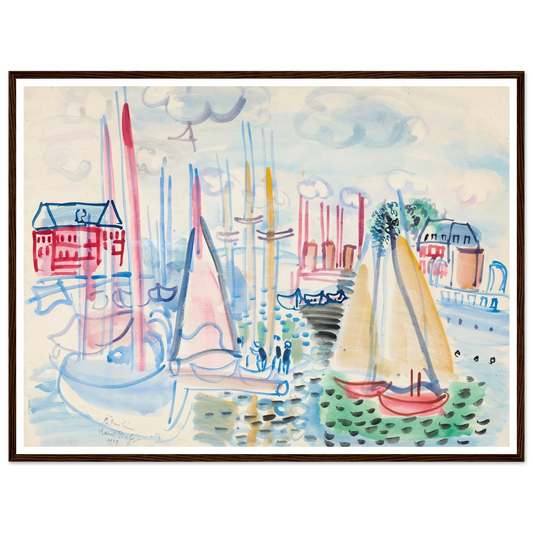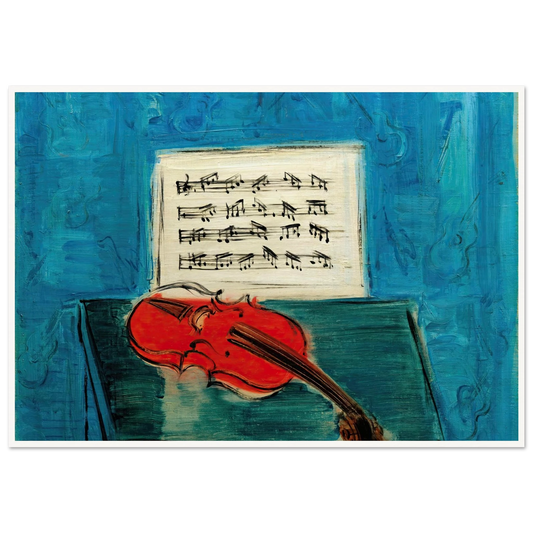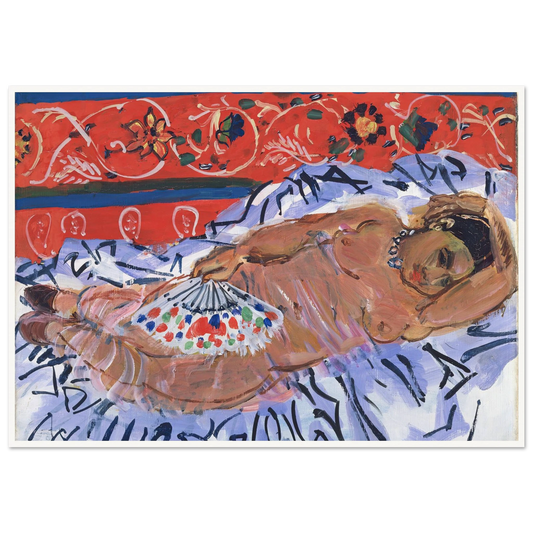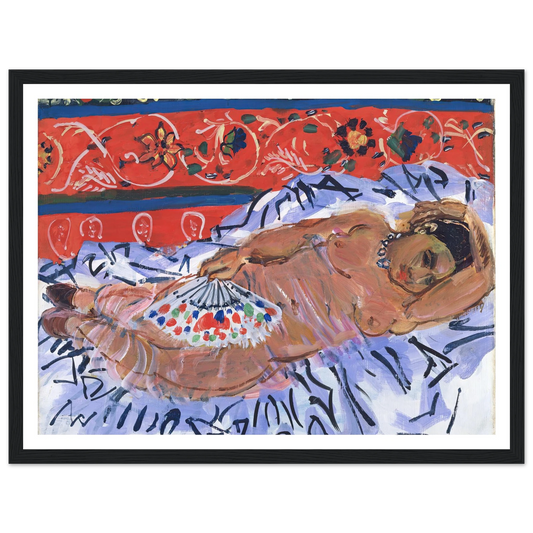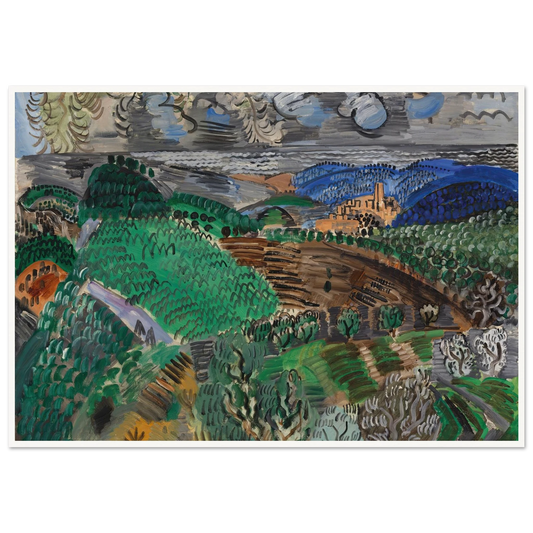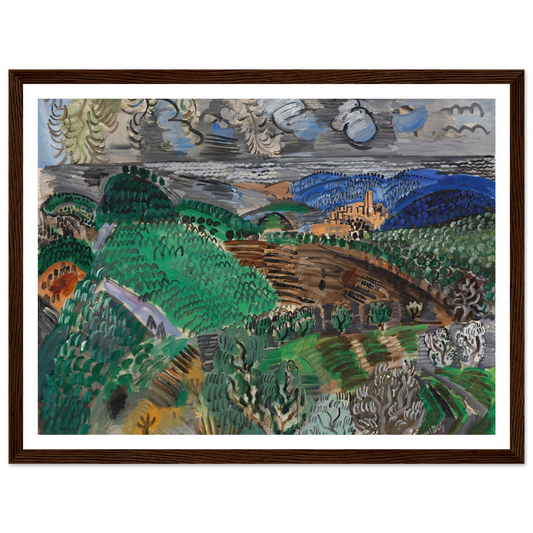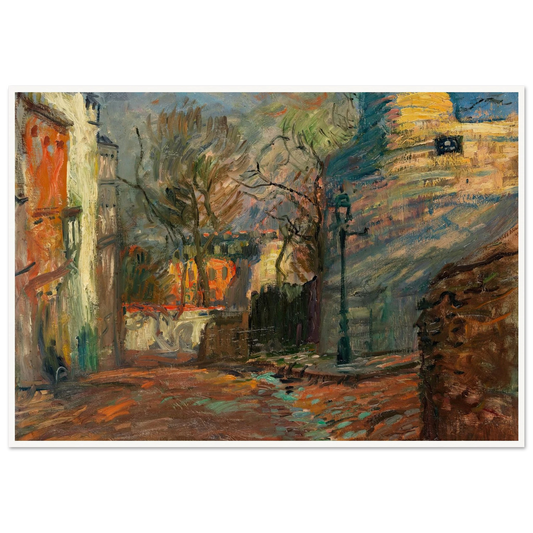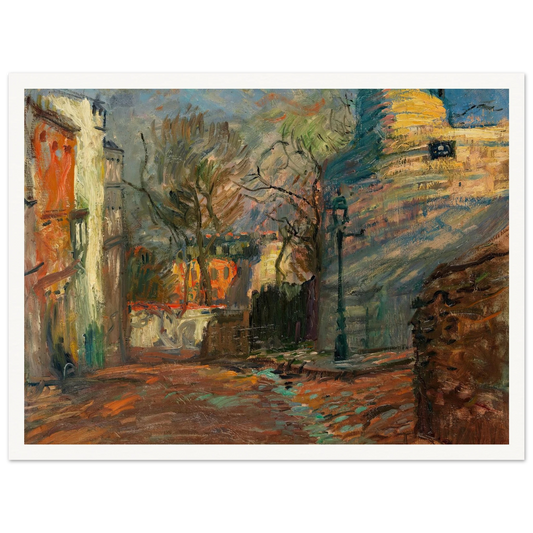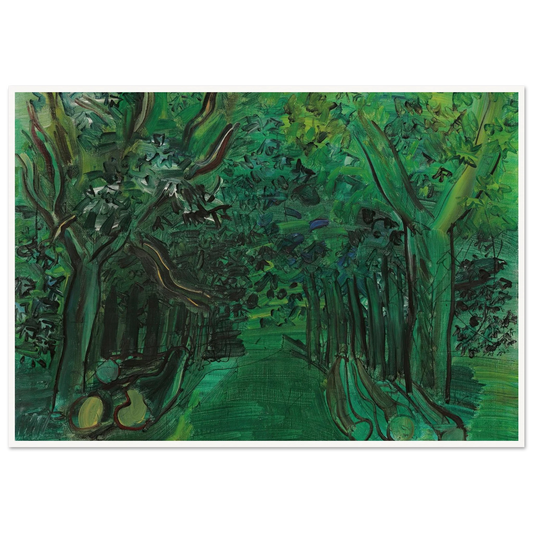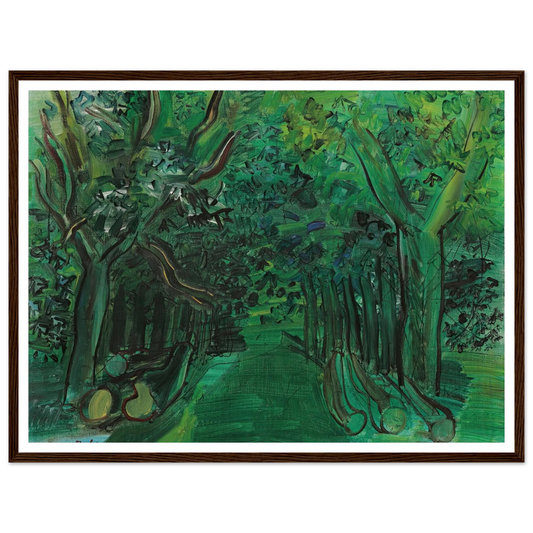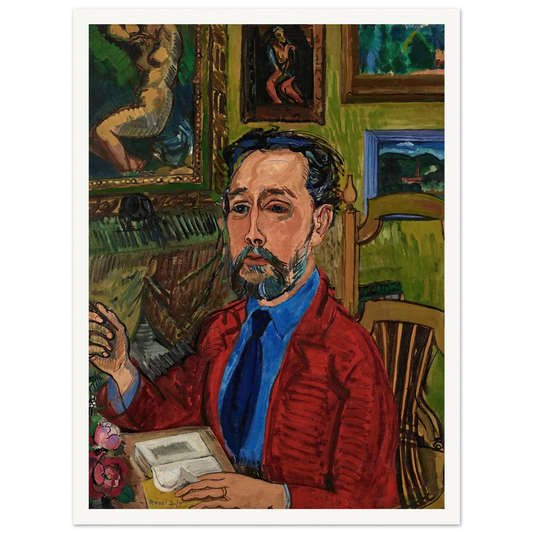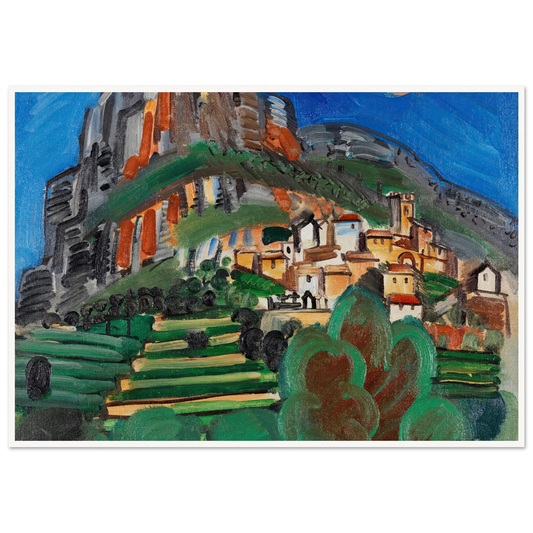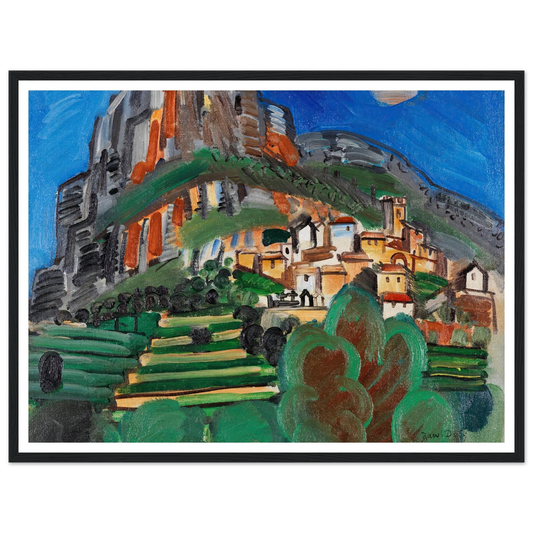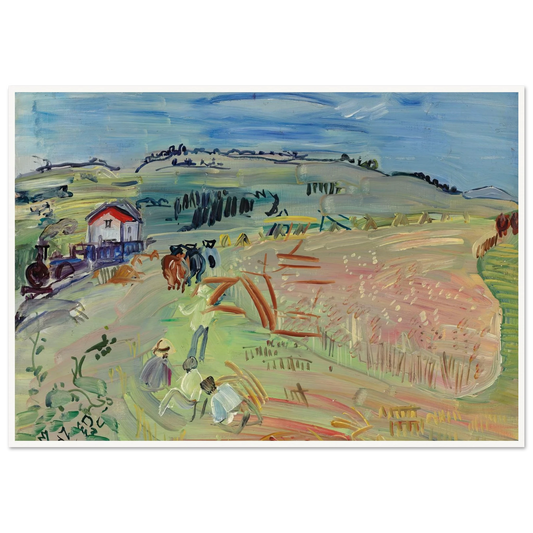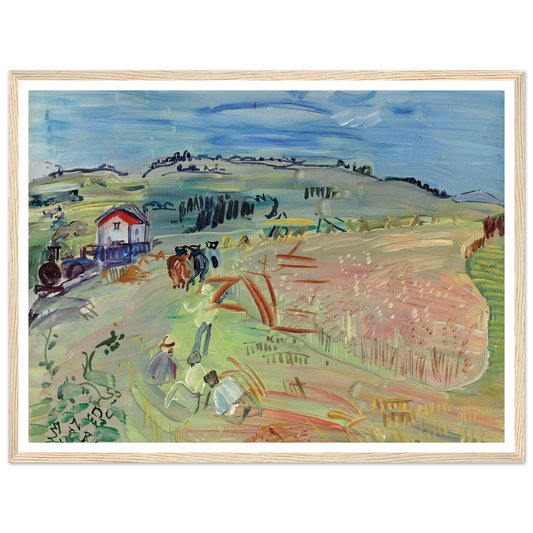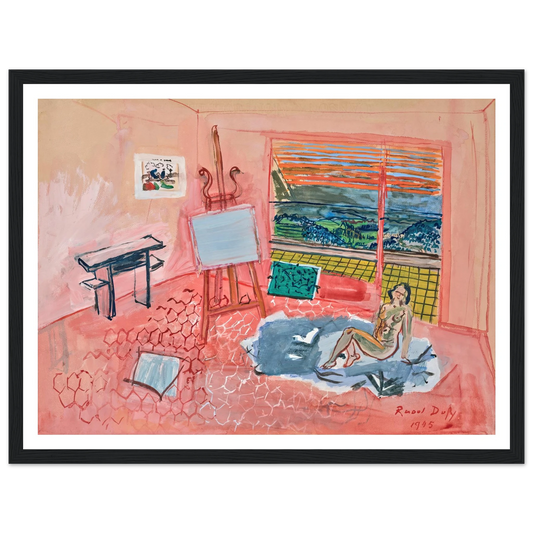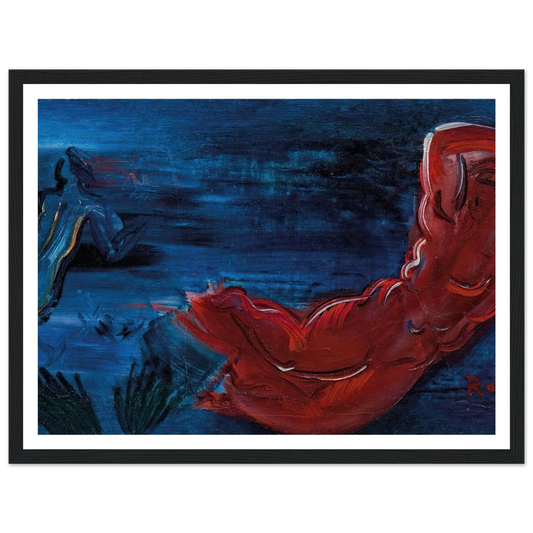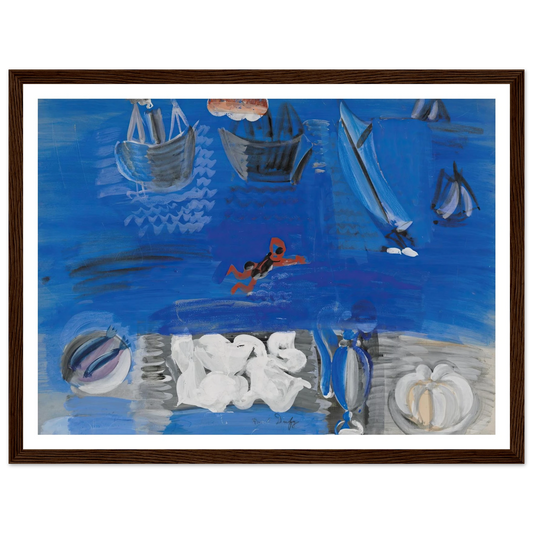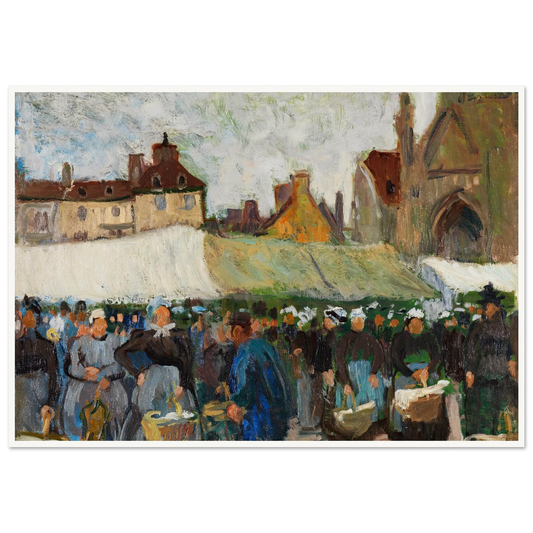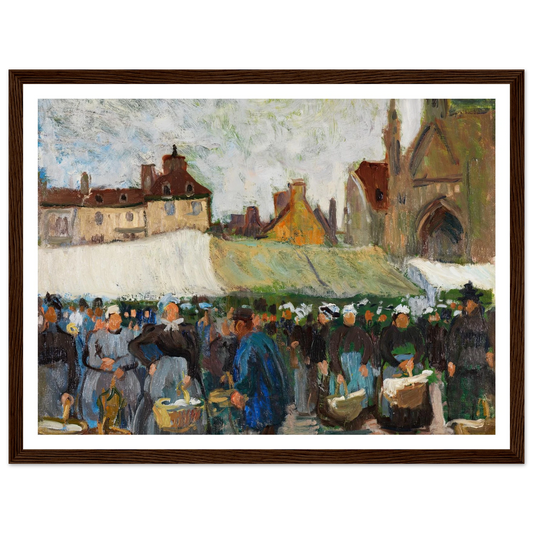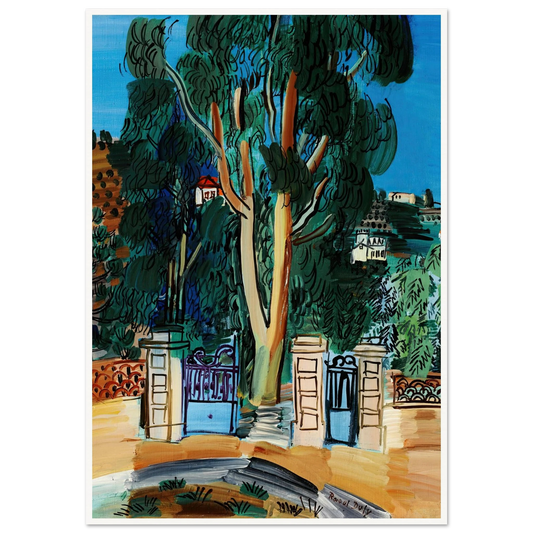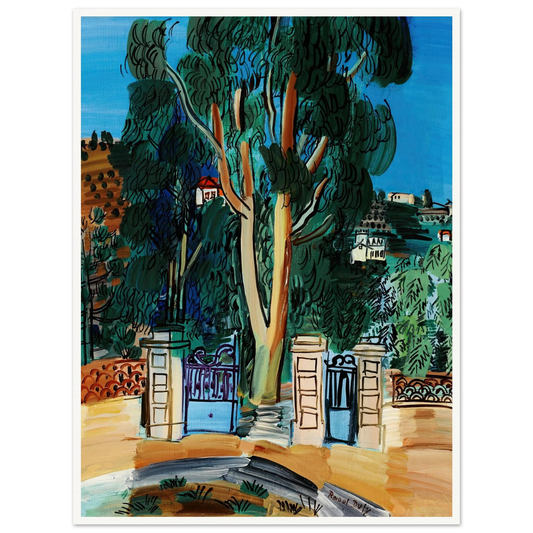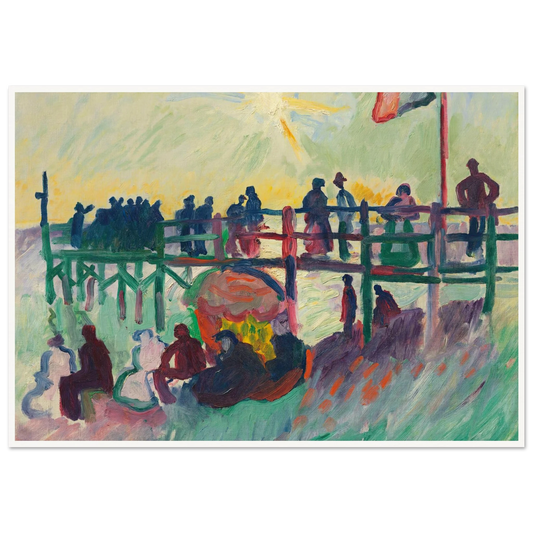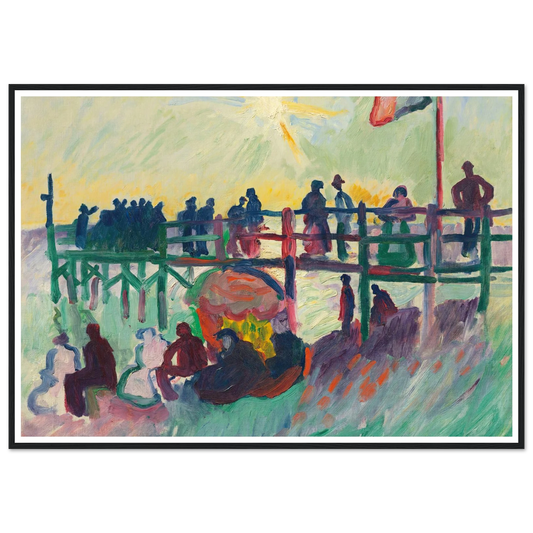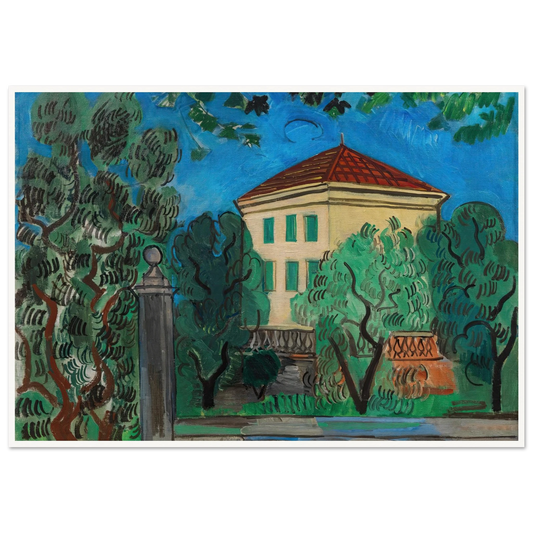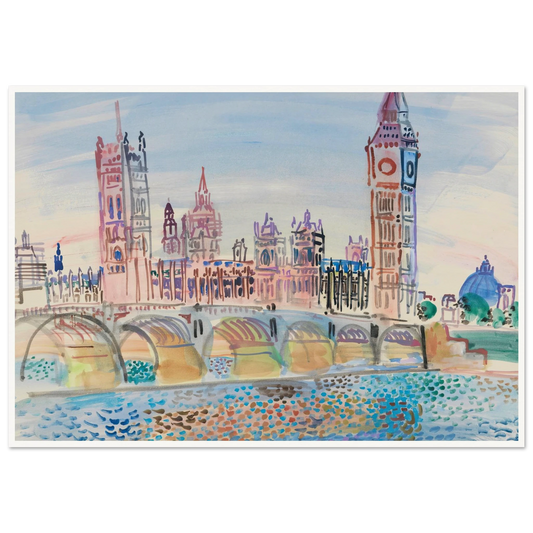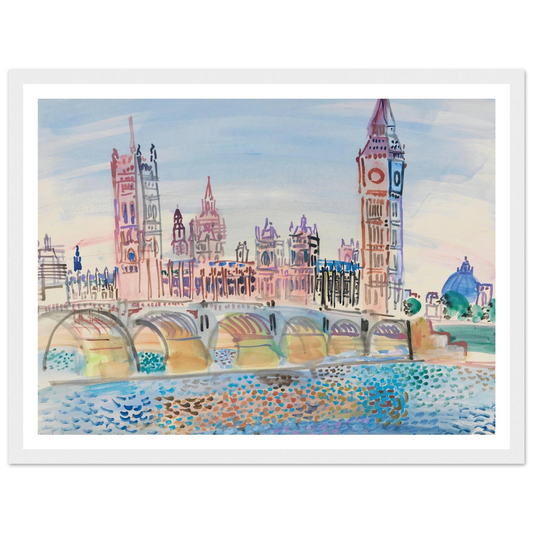Raoul Dufy was a French painter, designer, and illustrator celebrated for his joyful use of color, flowing lines, and radiant depictions of leisure and urban life. Associated with Fauvism in his early career and later known for his decorative style, Dufy brought a sense of lightness and vitality to the modern art movement.
Born in Le Havre, Normandy, Dufy began his artistic training at the École des Beaux-Arts in Paris, where he was initially influenced by the Impressionists, particularly Claude Monet. However, his exposure to the bold, expressive color of Henri Matisse and the Fauves in the early 1900s transformed his approach. He began using bright, unmixed colors and simplified forms to capture the essence of a scene rather than its strict realism.
Dufy became known for painting scenes of regattas, orchestras, seaside resorts, and bustling public events like horse races and concerts. His works conveyed a sense of motion and happiness, often featuring rhythmic compositions and airy brushwork. Outside of painting, he made significant contributions to textile design, ceramics, and public murals, collaborating with couturiers like Paul Poiret and designing for the Gobelins tapestry factory.
Later in his career, Dufy developed a unique style that combined structure with spontaneity, often described as lyrical and musical. Despite being diagnosed with rheumatoid arthritis in his later years, he continued to work and even completed one of his largest projects — a vast mural titled La Fée Électricité for the 1937 International Exposition in Paris.
Raoul Dufy's legacy is one of brilliance, optimism, and artistic versatility. His work remains a celebration of life’s pleasures — capturing light, movement, and the exuberance of the modern world with unmistakable charm.


